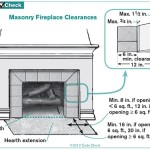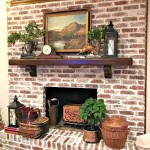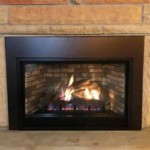Stone Fireplace Designs: A Comprehensive Guide
Stone fireplaces offer a timeless appeal and a significant focal point for any living space. Their inherent durability, coupled with the vast array of available stone types and design possibilities, makes them a popular choice for both new construction and renovations. Understanding the various design elements and considerations is crucial for achieving a stone fireplace that is both aesthetically pleasing and functionally sound.
This article will delve into the key aspects of stone fireplace design, encompassing stone selection, style considerations, construction nuances, and maintenance practices. The information presented aims to provide a comprehensive understanding of the subject, enabling informed decision-making throughout the design and installation process.
Stone Selection: Aesthetics and Performance
The selection of stone is arguably the most critical element in designing a stone fireplace. The type of stone dictates not only the aesthetic appeal but also impacts the fireplace's lifespan, maintenance requirements, and thermal performance. Several factors influence the choice, including budget, desired aesthetic, structural considerations, and regional availability.
Fieldstone, characterized by its irregular shapes and natural textures, offers a rustic and organic look. Its earthy tones and varying sizes contribute to a unique and informal ambiance. Sourcing fieldstone locally often minimizes transportation costs and ensures compatibility with the surrounding environment.
River rock, known for its smooth, rounded surfaces, provides a softer and more refined aesthetic. Its water-worn appearance adds a touch of tranquility to the space. River rock is typically sourced from riverbeds and is available in a range of colors and sizes. Its smooth texture makes it relatively easy to clean.
Ledgestone, comprised of thin, stacked pieces of stone, offers a contemporary and architectural appearance. Its linear patterns and clean lines create a sense of order and sophistication. Ledgestone is often used in modern and transitional designs. The consistent thickness of the stones simplifies the installation process.
Limestone, a sedimentary rock, is prized for its elegant appearance and subtle variations in color and texture. Its neutral tones and smooth surface make it a versatile choice for various design styles. Limestone is relatively soft and porous, requiring sealing to prevent staining and water damage.
Granite, an igneous rock, is renowned for its exceptional durability and resistance to heat and scratches. Its speckled appearance and wide range of colors make it a popular choice for high-traffic areas. Granite is relatively expensive but offers long-lasting performance and minimal maintenance.
Manufactured stone veneer offers a cost-effective alternative to natural stone. It is made from concrete and pigments, replicating the appearance of various natural stone types. Manufactured stone is lighter and easier to install than natural stone, reducing labor costs. However, it may not possess the same natural variations and character as natural stone.
Beyond aesthetic considerations, the thermal properties of the chosen stone are important. Stone possesses excellent heat retention capabilities, which means a stone fireplace will continue to radiate warmth even after the fire has died down. However, different types of stone have varying thermal capacities. Dense stones like granite and marble retain heat longer than porous stones like limestone and sandstone. Factors such as the thickness and size of the stone used will also affect heat retention. For optimal heat performance, it is important to consider the specific heat requirements of the space and select a stone and design that aligns with those requirements.
Style Considerations: Matching Architecture and Personal Preferences
The style of a stone fireplace should complement the architectural style of the home and reflect the personal preferences of the homeowner. A harmonious integration of the fireplace into the overall design scheme enhances the aesthetic appeal and creates a cohesive living space.
For rustic homes, a large, imposing fireplace constructed from fieldstone or river rock is a natural fit. The rough-hewn texture and earthy tones of these stones evoke a sense of warmth and connection to nature. A substantial mantel crafted from reclaimed wood further enhances the rustic charm.
In contemporary homes, a sleek and minimalist stone fireplace constructed from ledgestone or smooth limestone is a popular choice. The clean lines and geometric patterns of these stones create a sense of order and sophistication. A floating mantel or a metal surround adds a modern touch.
For traditional homes, a classic stone fireplace constructed from limestone or granite is a timeless choice. The elegant appearance and subtle variations in color and texture of these stones complement the traditional architectural details. A decorative mantel and ornate carvings enhance the fireplace's visual appeal.
The size and scale of the fireplace should be proportional to the size of the room. A large fireplace in a small room can feel overwhelming, while a small fireplace in a large room can appear insignificant. Careful consideration of the room's dimensions is essential for achieving a balanced and visually appealing design.
The placement of the fireplace also plays a crucial role in its overall impact. A fireplace located in the center of a wall typically serves as the primary focal point of the room. A corner fireplace can create a cozy and intimate seating area. A two-sided fireplace can divide a large room while providing warmth and ambiance to both spaces. The location chosen should maximize visibility and accessibility while also considering the functional layout of the room.
Mantel design is another important consideration. The mantel serves as a decorative shelf and a visual anchor for the fireplace. Mantels can be crafted from a variety of materials, including wood, stone, and metal. The style and material of the mantel should complement the overall design of the fireplace. For example, a rustic stone fireplace might feature a reclaimed wood mantel, while a contemporary stone fireplace might feature a sleek metal mantel.
Construction and Maintenance: Ensuring Longevity and Safety
Proper construction techniques are essential for ensuring the structural integrity and safe operation of a stone fireplace. Adherence to local building codes and best practices is crucial for preventing hazards and ensuring long-term performance. A qualified and experienced contractor should be entrusted with the installation process.
The foundation of a stone fireplace must be strong and stable to support the weight of the stone. A concrete footing is typically required, extending below the frost line to prevent shifting and cracking. The foundation should be level and properly reinforced to ensure the stability of the fireplace structure.
The firebox, the area where the fire burns, must be constructed from fire-resistant materials, such as firebrick or refractory concrete. These materials are designed to withstand the high temperatures generated by the fire. The firebox should be properly sized to accommodate the desired fuel and ensure efficient combustion.
The chimney, responsible for venting smoke and gases to the outside, must be properly designed and constructed to ensure safe and efficient operation. The chimney should extend at least three feet above the highest point where it penetrates the roof and at least two feet higher than any structure within ten feet. This ensures adequate draft and prevents downdrafts.
The mortar used to bind the stones together must be specifically formulated for fireplace construction. Fireplace mortar is designed to withstand high temperatures and thermal expansion. The mortar joints should be properly filled and finished to prevent water penetration and maintain the structural integrity of the fireplace.
Regular maintenance is essential for preserving the appearance and extending the lifespan of a stone fireplace. Cleaning the stone surface regularly removes soot, dust, and other debris that can accumulate over time. A soft brush and mild detergent can be used to clean most types of stone. Harsh chemicals and abrasive cleaners should be avoided, as they can damage the stone surface.
Sealing the stone surface helps protect it from staining and water damage. Sealants penetrate the stone's pores and create a barrier against moisture and contaminants. The frequency of sealing depends on the type of stone and the amount of exposure to the elements. Porous stones like limestone and sandstone require more frequent sealing than dense stones like granite and marble.
Inspecting the fireplace and chimney annually is crucial for identifying and addressing potential problems. A qualified chimney sweep can inspect the chimney for cracks, blockages, and other damage. Regular chimney sweeping removes creosote buildup, reducing the risk of chimney fires. Any necessary repairs should be performed promptly to prevent further damage and ensure safe operation.
Following these guidelines will contribute to the creation and preservation of a stone fireplace that provides warmth, beauty, and lasting value.

50 Sensational Stone Fireplaces To Warm Your Senses
:strip_icc()/Screenshot2021-10-19at09-16-46Portfolio-AmyBartlamPhotography-1f35ea9ec29846779a2d62b42676eff9.png?strip=all)
20 Best Stone Fireplace Ideas

50 Sensational Stone Fireplaces To Warm Your Senses

65 Best Stone Fireplace Design Ideas To Ignite Your Decor Designs Home

25 Stone Fireplace Ideas For A Cozy Nature Inspired Home Surround Country

Natural Stacked Stone Veneer Fireplace Ideas

Creative And Beautiful Fireplace Design Ideas Our Top Picks Stone Center

Stone Fireplace Design And Remodel

Stone Fireplaces

50 Sensational Stone Fireplaces To Warm Your Senses
Related Posts








